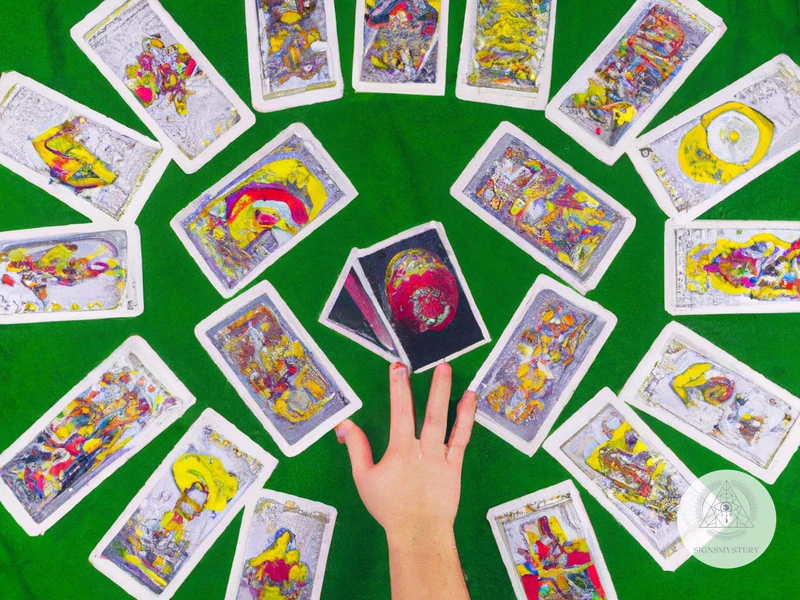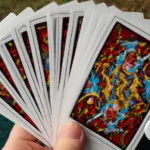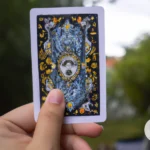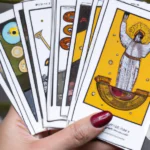Making decisions can often be a challenging and perplexing process. Whether it is deciding where to live, what career to pursue, or even what to have for dinner tonight, our lives are full of choices that can leave us feeling overwhelmed or unsure. This is where tarot and oracle cards can come in handy, as they can offer guidance and insights into our decision-making processes. By choosing the right decision-making spread and interpreting the cards properly, we can gain a deeper understanding of the issues at hand and the potential outcomes of our choices. In this article, we will guide you through the step-by-step process of interpreting a decision-making spread, including choosing the right spread, preparing your deck, focusing your energy, interpreting the cards, and putting it all together to make a confident and informed decision.
Choosing a Decision Making Spread
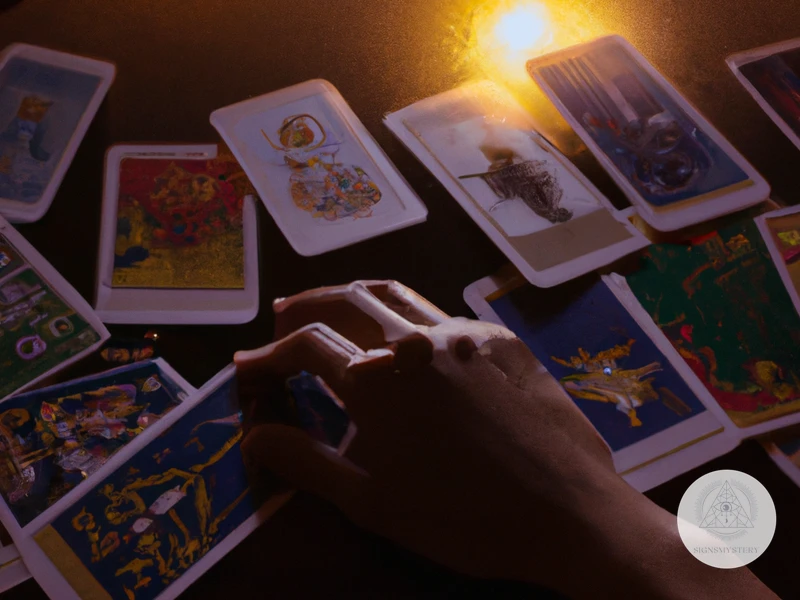
When it comes to making important decisions, sometimes you need a little extra guidance. Whether you are new to tarot and oracle cards or have been using them for a while, choosing the right spread for your decision can be a daunting task. It’s important to find a spread that aligns with your question and provides clear insight into your dilemma. In the following sections, we will explore both tarot and oracle card spreads that can help you with decision making. Be sure to check out our beginner’s guide to tarot spreads for decision making for more information on different types of spreads.
Tarot Spreads
When it comes to decision making spreads, Tarot spreads are a common choice for many individuals. The Tarot is a deck of 78 cards that are each rich in symbolism and meaning. There are a variety of Tarot spreads which can be used for decision making, each with its own unique strengths and weaknesses.
One popular Tarot spread for decision making is the Decision Cross spread. This spread consists of five cards which are laid out in a cross pattern. The first card represents the situation at hand, while the second card represents the challenges that must be overcome. The third card represents the underlying factors influencing the decision, while the fourth card represents the potential outcome of each option. The final card represents the overall advice or guidance for the decision.
Another popular Tarot spread for decision making is the Pathfinder spread. This spread consists of six or seven cards, depending on how many options are being considered. The first card represents the current situation, while the subsequent cards represent each option being considered. The final card represents the potential outcome of each option.
A third option for Tarot spreads for decision making is the Two Paths spread. This spread consists of four cards which are laid out in two columns representing each option being considered. The first card in each column represents the current situation for that option, while the second card represents the potential outcome for that option.
It is important to note that while Tarot spreads can be incredibly insightful and helpful for decision making, they are not a substitute for professional advice or guidance. If you are struggling to make a decision, it may be helpful to speak with a trusted friend, family member, or professional to gain a new perspective and additional guidance.
Oracle Card Spreads
Oracle cards can also be used for decision making. These cards typically have fewer cards in the deck than tarot cards and have a more positive or uplifting energy. Oracle card spreads can range from simple single card draws to more complex multi-card spreads. Here are some popular oracle card spreads for decision making:
| Card Spread | Description |
|---|---|
| The Yes/No Spread | This is a simple two-card spread that is useful for answering straight yes or no questions. The first card represents “yes” and the second card represents “no”. |
| The Five-Card Spread | This spread involves pulling five cards that represent different aspects of the decision at hand: the problem, the cause, the solution, the outcome, and the lesson learned. |
| The Past/Present/Future Spread | This spread involves pulling three cards that represent the past, present, and future of the decision at hand. This spread can provide insight into how the decision may play out in the long run. |
Keep in mind that oracle cards may have different meanings and interpretations than tarot cards. It is important to read the guidebook that comes with your deck and to develop a relationship with the cards through regular use. If you’re interested in learning more about oracle cards, check out Oracle Cards for Tough Choices: A Beginner’s Guide.
Preparing to Interpret Your Spread
Preparing your deck and your energy for a reading is an essential step in interpreting your decision-making spread. Proper preparation prepares your mind and soul to engage with your cards, creating the optimal state for insight and revelation. Before diving into your spread, consider the following steps: cleansing and shuffling your deck, focusing your energy, and formulating your question. These preparation steps will guide you in your journey towards understanding your spread’s message and applying it to your decision. For more information about decision-making spreads, check out our recommended best tarot cards for decision spreads, top 5 mistakes for decision spreads, or our beginner’s guide for tarot spreads for decision making.
Cleansing and Shuffling Your Deck
Before conducting a decision making spread, it is essential to ensure that your deck is cleansed and shuffled properly. This step prepares your deck to deliver clear and accurate messages, as well as avoids any external influences or biases from affecting your reading. Here are some tips to help you successfully cleanse and shuffle your deck:
| Cleansing Your Deck | Shuffling Your Deck |
| 1. Use herbs such as sage or palo santo to smudge your deck, passing each card through the smoke and setting positive intentions for your reading. | 1. Shuffle your deck thoroughly, ensuring that every card is randomly mixed in. |
| 2. Place your deck in a window sill for a day or two to let the sun and moon energies cleanse and recharge your cards. | 2. Cut the deck into three piles and re-stack them in a different order than before. Repeat this process a few times. |
| 3. Place a clear quartz crystal on top of your deck, setting the intention to clear any negative energies and promote clarity and focus. | 3. Mix the cards with another deck or with cards facing down on the table, ensuring that your cards are thoroughly shuffled. |
Cleansing and shuffling your deck is crucial to ensure that your reading is accurate and insightful. Following these tips will help you get the most out of your decision making spread and provide you with the clarity you need to make important decisions.
Focusing Your Energy
One important aspect of preparing to interpret your decision making tarot or oracle card spread involves focusing your energy. This step includes setting your intention, calming your mind, and entering a meditative state. Here are some ways to focus your energy:
| Method | Description |
|---|---|
| Deep Breathing | Take deep breaths, inhaling for 5 seconds and exhaling for 5 seconds. Repeat this several times or until you feel more centered and calm. |
| Grounding Exercises | Stand with your feet firmly planted on the ground, and visualize your energy flowing down into the earth and connecting with its energy. Alternatively, you can sit and imagine roots growing down from the base of your spine and into the ground. |
| Meditation | Find a comfortable position and focus on your breath, clearing your mind of any distracting thoughts. You might choose to repeat a mantra or visualize a peaceful scene to help you relax. |
| Setting Your Intention | Before you begin shuffling your cards, mentally state your intention for the spread. This might be a specific decision you need help making, or simply a desire for clarity and guidance. |
It’s important to remember that everyone’s energy is unique, so choose the method that works best for you to help you focus your energy before you begin your card reading. Taking the time to focus your energy can help you connect more deeply with the cards and gain greater insights into your decision making process.
Formulating Your Question
One of the most important steps in preparing to interpret your decision-making tarot or oracle card spread is formulating a clear question. Your question should be specific and focused, as it is the foundation for the entire reading. Use the following table to guide you in formulating your question:
| Question Type | Description | Example |
|---|---|---|
| What | A question that seeks specific information or insight. | What steps can I take to improve my financial situation? |
| How | A question that asks for guidance on how to approach a situation. | How can I communicate more effectively with my partner? |
| Why | A question that seeks insight into the underlying reason for a situation or behavior. | Why do I feel afraid of taking risks? |
| Should | A question that addresses a decision or choice. | Should I quit my job and pursue my passion? |
| When | A question that seeks insight into the timing of a situation. | When is the best time to launch my new business? |
Once you have identified the type of question you want to ask, phrase your question in a way that is clear and concise. Avoid asking overly broad or vague questions, as they can lead to confusing or inaccurate readings. For example, asking “What does my future hold?” might be too broad, while “What steps can I take to improve my career prospects?” is more focused and specific. Remember that the quality of your question has a direct impact on the accuracy and effectiveness of your reading.
Interpreting the Cards
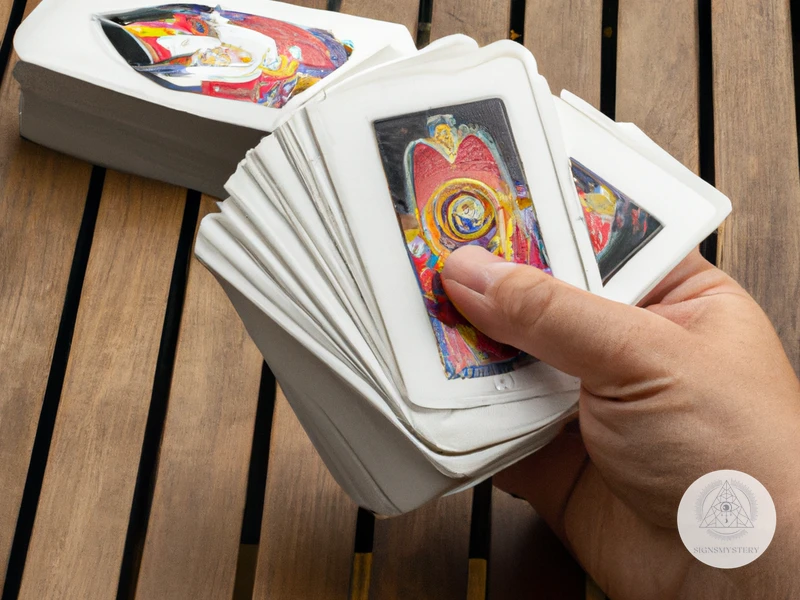
As you lay out your chosen decision-making spread, the cards may seem like an enigma, leaving you wondering how to decipher their meanings. However, with a little guidance and intuition, interpreting the cards can give you insight into your situation and guide you towards clarity. In this section, we will explore the significance of each card, the relationships between them, and the overall message of the spread, so that you can confidently interpret the cards and discover the message they hold for you. Let’s delve into the intricate world of card interpretation.
The Significance of Each Card
When interpreting a decision-making spread, it is important to understand the significance of each card on its own. Each card has its own unique energy and message to convey. Here are some key points to consider when looking at the significance of each card:
- Suit: Start by identifying the suit of the card. Each suit represents a different aspect of life. For example, the suit of Cups represents emotions and relationships, while the suit of Pentacles represents material possessions and money.
- Number: The number of the card can also provide insight into its meaning. Cards with low numbers (Ace to Five) usually represent new beginnings and opportunities, while higher numbers (Six to Ten) often represent challenges and growth.
- Image: Look at the imagery on the card. What symbols and colors are present? What do they represent? The images can offer clues about the card’s meaning and message.
- Reversed: If the card is pulled reversed, its meaning can be different from if it is pulled upright. Reversed cards often represent internal struggles or the need to adjust one’s perspective or behavior.
Keep in mind that while each individual card is important, it is also crucial to consider the whole spread and how each card relates to the others. The relationships between cards can provide deeper meaning and insight into the overall message of the spread.
The Relationships Between Cards
When interpreting a decision-making spread, it’s important to consider not only the individual meanings of each card, but also the relationships between them. Here are some ways to analyze the connections between cards:
- Position: The position of a card in the spread can impact the meaning of nearby cards. For example, if a card is in a position indicating obstacles, it may affect the interpretation of cards in adjacent positions.
- Direction: The direction in which a card is facing can also provide insight. For example, a card facing left might represent the past or things that need to be released, while a card facing right might represent the future or things that need to be pursued.
- Spatial relationships: The physical distance between cards can also be significant. Cards that are close together might represent related or interconnected themes, while cards that are far apart might represent unrelated or opposing forces.
- Repeating themes: If multiple cards in a spread share a common theme, it’s important to consider how they reinforce or contradict each other. For example, if several cards indicate a need for decision-making, this might emphasize the importance of taking action.
- Contrasting cards: On the other hand, if two cards have opposing meanings, this might indicate a conflict or choice between different options.
By considering these relationships between cards, you can gain a deeper understanding of the message being communicated by the spread as a whole. Remember to keep an open mind and allow the cards to guide you towards the insights you need to make the best decision possible.
The Overall Message of the Spread
Now that you have interpreted the significance of each card in your decision-making spread and examined the relationships between them, it’s time to determine the overall message of the spread. This is where you tie everything together and gain a better understanding of the guidance the cards
Subscribe to Our Newsletter
Sign up to receive the latest news and updates.
To do this, you will need to look at the big picture and see how the individual cards connect with one another. Take note of any strong patterns or themes that emerged, as well as any recurring symbols, colors, or numbers. These can offer additional insight into the message the cards are conveying.
One helpful way to analyze the overall message of your spread is to create a table that highlights the key themes and takeaways. Consider including the following categories:
Card Position: Note the position of each card in the spread, as this can add nuance to its meaning.
Card Meaning: Summarize the meaning of each card based on your interpretation.
Themes: Identify any recurring themes or motifs that emerged throughout the spread.
Advice: Based on your interpretation of each card and the overall message of the spread, write down any advice or guidance the cards are offering you.
Using a table like this can be a useful tool for organizing your thoughts and gaining a deeper understanding of the guidance the cards are providing. Remember, there is no one “right” way to interpret a spread – trust your instincts and let the cards speak to you in their own way.
Putting it All Together
Now that you have interpreted each card in your decision-making spread and understood their relationships with each other, it’s time to put all the pieces together. Combining each element of your spread will help you gain a comprehensive understanding of the overall message it holds for you. This section will guide you through the process of interpreting the spread’s message and applying it to your decision. With the tools and techniques you have learned, you will be able to uncover insights that will lead you towards making the best decision possible. So, let’s explore how to put it all together in the most effective way.
Interpreting the Spread’s Message
Once you’ve laid out your decision making spread, the next step is to interpret its message. This can be a challenging task, but one that can be made easier by taking a step-by-step approach. Here are some tips for interpreting your spread’s message:
- Consider each card individually: Look at each card in your spread and think about what it represents. Consider the symbolism of the card, as well as its traditional meanings. Pay attention to any impressions or feelings that arise as you look at each card.
- Examine the interactions between cards: Pay attention to the relationships between the cards in your spread. Do any of them seem to be connected or linked together? Are there any patterns or groupings that emerge?
- Look for overarching themes: Sometimes, a spread may have an overall theme or message that emerges from the individual cards. Look for common threads or motifs that appear throughout the spread.
- Consider the position of each card: The position of each card in your spread can also provide important clues as to its significance. Think about what each position represents and how the card in that position might relate to your question or decision.
- Take your intuition into account: Finally, trust your intuition when interpreting your spread. Sometimes, a card’s traditional meaning or position in the spread may not seem to make sense. In these cases, pay attention to any intuitive messages you receive and use them to help guide your interpretation.
By taking the time to thoroughly interpret your decision making spread, you can gain valuable insight and guidance for your decision-making process.
Applying the Message to Your Decision
Once you have interpreted the message of your decision making spread, it’s important to apply it to the decision you are facing. One way to do this is by using an application table.
| Decision: |
|———–|
| |
In the first column of the table, write down the decision you are facing. This will help you focus your thoughts and energy on the specific problem at hand.
Next, in the second column, write down the interpretation of your spread. This will serve as a reminder of the message you received from the cards.
| Decision: | Interpretation: |
|———–|—————-|
| | |
In the third column, write down actions you can take based on the interpretation of your spread. These actions should be specific and related to the decision you are facing. For example, if the cards suggest that you need to be more patient, your action could be to take a step back and wait before making a final decision.
| Decision: | Interpretation: | Actions: |
|———–|—————-|———-|
| | | |
Finally, in the fourth column, write down any support you may need to carry out those actions. This could include resources, guidance from others, or simply reminding yourself of the message you received from the cards.
| Decision: | Interpretation: | Actions: | Support: |
|———–|—————-|———-|———-|
| | | | |
By filling out this application table, you can create a clear plan of action for applying the message of your spread to your decision. This will help you move forward with confidence and clarity.
Conclusion
In conclusion, interpreting a decision making spread requires a combination of intuition, knowledge of the cards and spreads, and a clear understanding of your question. By choosing a spread that resonates with you and following the steps to prepare yourself and your deck, you can successfully gather insights and guidance from the cards.
It’s important to keep in mind that tarot and oracle cards can offer possibilities and potential outcomes, but ultimately, the decisions and actions you take are up to you. The cards can provide guidance and support, but they should not be relied upon solely for making important decisions.
When interpreting your spread, it’s helpful to focus on the significance of each individual card, as well as the relationships between the cards and the overall message of the spread. Take note of any patterns, symbols, or themes that emerge, as these can help provide a deeper understanding of the message.
Once you have interpreted the spread’s message, it’s important to apply it to your decision-making process. Consider how the insights gained from the cards can inform your choices and actions moving forward, and trust your intuition to guide you in making the best decision for yourself.
Ultimately, interpreting a decision making spread can be a powerful tool for gaining clarity and insight, but it’s important to approach the process with an open mind and a willingness to be vulnerable and honest with yourself. With practice and patience, you can cultivate a deeper connection with the cards and use them to support and guide you on your journey.
Frequently Asked Questions
What is a decision-making spread?
A decision-making spread is a layout of tarot or oracle cards used to answer a specific question related to making a decision. Each card in the spread represents a different aspect of the situation at hand and helps the seeker gain insight into how to proceed.
How do I choose a decision-making spread?
Choose a spread that suits the complexity of the decision you are facing. More intricate spreads may have more cards and represent more facets of the situation, while simpler spreads may be better for straightforward decisions.
What is the difference between a tarot spread and an oracle card spread?
A tarot spread uses tarot cards, which have a traditional set of meanings and symbolism. An oracle card spread can use any type of card deck, and the meanings may be more open to interpretation by the reader.
How do I cleanse and shuffle my cards?
Cleanse your cards by smudging them with sage or using a crystal, such as clear quartz. Shuffle your cards until you feel they have been thoroughly mixed together and they feel energized.
What does it mean to focus my energy?
Focus your energy by taking some deep breaths and visualizing a white light surrounding you and your cards. This helps to ground and center you, so you can connect more fully with the cards.
How do I formulate a question for the cards?
Formulate your question in a clear and concise manner, avoiding yes or no questions. Consider what you need to know in order to make your decision and frame your question around that.
What does each card in the spread represent?
Each card in the spread represents a different aspect of the situation, such as your hopes and fears, the internal and external factors at play, and potential outcomes or actions to take.
What do the relationships between the cards mean?
The relationships between the cards can tell a story and provide insight into how the different aspects of the situation are connected or affecting each other. Pay attention to any patterns or themes that emerge.
How do I interpret the overall message of the spread?
Interpret the overall message of the spread by considering the meanings of each card in relation to the others, as well as any patterns or themes that emerge. Look for the main message or advice the cards are offering in regards to your decision.
How can I apply the message of the spread to my decision?
Apply the message of the spread by considering how the advice offered by the cards can inform your decision-making process. Think about how you can use the insights gained from the spread to navigate the situation and make the best decision possible.

